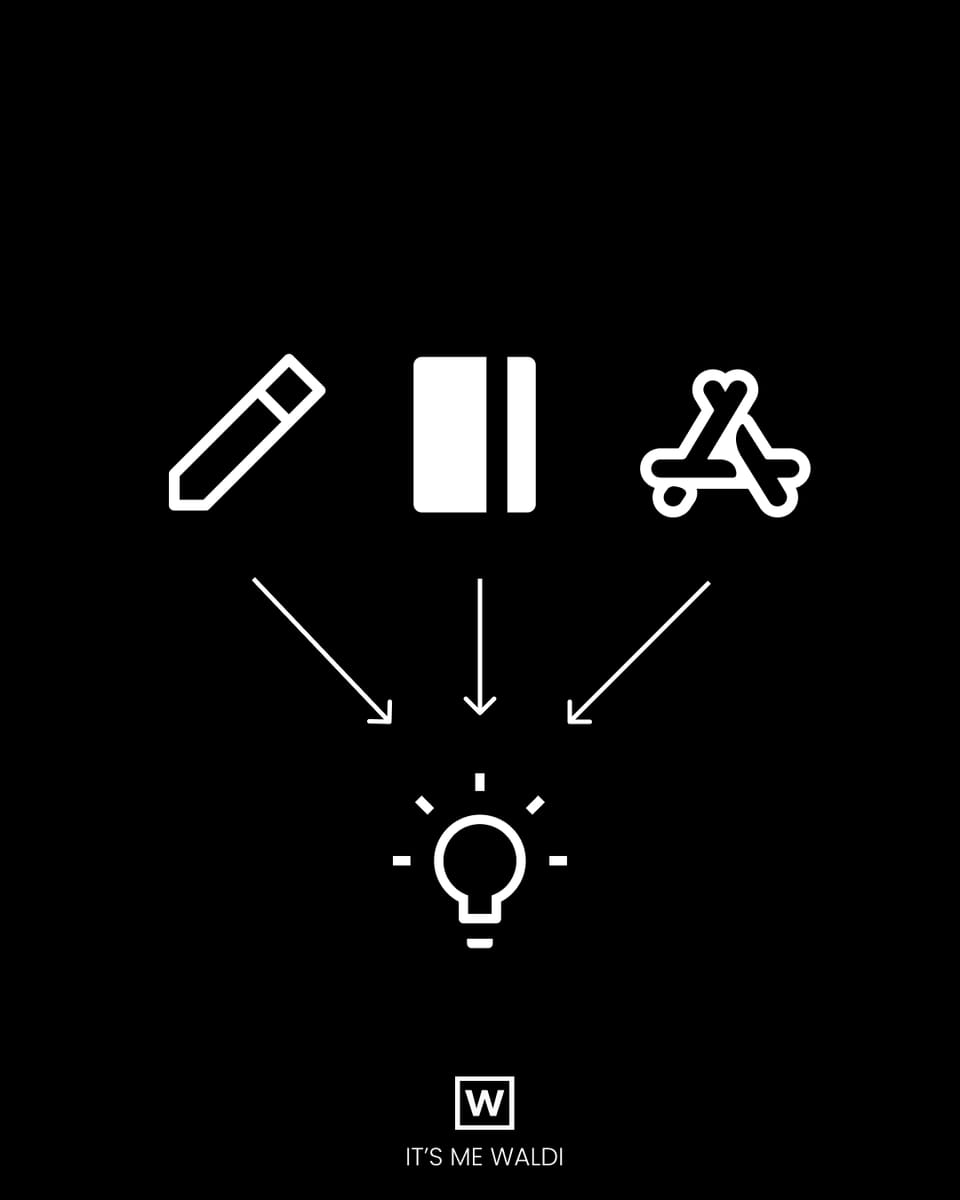The Art of Problem-Solving: 3 Effective Writing Techniques

Last week, I wrote to you about the importance of writing down your problems to understand them.
I've ended that letter with the idea that writing your problems down matters more than how you write them down. I also wrote that there are different ways of writing down your problems depending on your personality, strengths, and weaknesses.
Today, I'll show you 3 different methods for writing down your problems to understand them better.
Let's jump in:
1. The Classic: Pen & Paper
This method is as old as writing itself:
You grab a pen and a piece of paper and start writing.
I recommend you start with this.
It's easy, simple, and readily available.
In other words, it has a minimal excuse surface, because its requirements are so low. You don't need a specific pen or paper, no specific time, or elaborate setup. You just grab any pen and any paper and write.
It's great if you're not at home, tend to be perfectionistic, or are prone to avoidance.
It's less good if you've already written about a problem and want to build on the insights you've already unearthed.
For that, we have journaling.
2. The Home: Journaling
Journaling is the practice of writing down your thoughts in a dedicated notebook.
Journaling has some advantages. It's easy to do, ideal as a practice, and more sophisticated than writing your thoughts on random pieces of paper.
Disadvantages include only writing when your journal is ready, getting distracted by older entries, and getting lost in elaborate journaling practices like lettering that don't help you understand your problems better.
I recommend starting journaling when you've written with pen and paper a few times and want to give your writing a home and the potential to become a ritual.
I recommend the Leuchtturm notebooks if you want to get a good journal. They're sturdy, open fully, and extremely durable. I use the dotted A5 with a pen-sling.
If you want to not only write more but compound the insights of your writing, I recommend a digital note-taking system.
3. Digital Native: A modern note-taking system
A digital note-taking system is usually housed within a note-taking app like Evernote, Roam Research, or Notion.
The advantage of such a system is that your notes can easily compound and different insights can be easily connected.
Instead of sifting through disorganized stacks of papers or re-reading journal pages, you can open your note-taking app, write, and search the archive for related insights from earlier writing sessions.
The disadvantages of digital note-taking are becoming dependent on internet access or a device, losing track of specific ideas or notes, and paying for the app after a certain volume of notes.
So, these are the 3 I had in mind, but here's a 4th:
4. Bonus: Talk & Transcribe
So far, I've told you about classic ways of writing about your problems.
But you can also talk about them, record what you say, and let your phone transcribe it. Then transfer it to your note-taking app to have access to the text. This can be the best of both worlds.
The main advantage of this method is its ease. You grab your phone, open your transcription app, press start, talk, and send the transcript to your e-mail. Then you insert it into your note-taking app, reflect on it, and maybe even write about it some more.
Another advantage is that you can do this anywhere: on a walk, doing chores, or even while driving.
The disadvantages are the dependency on your phone, manually transferring the transcript to your note-taking system, and going on useless tangents.
Still, I enjoy this method very much because it's easy, quick, and gets good results.
Conclusions
There you have it.
Writing down your problems is important.
You can now experiment with these four methods:
- Pen and paper for quick and easy writing sessions.
- Journaling for a more organized session.
- Write in your favorite note-taking app for a more compounding approach
- Recording your thoughts on a phone and having it transcribe them for you
I strongly suggest experimenting with each one for a week to see which sticks.
I use all four depending on my mood, tools, and time.
And if you have a better approach, let me know on X.
Talk soon,
Waldi
